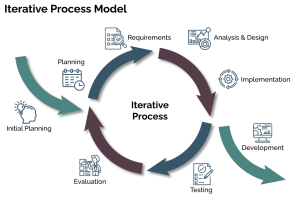How Does Iterative Design Help in Identifying and Addressing Design Flaws?
How Does Iterative Design Help
The iterative design process is a key component of user experience engineering (UX), and it’s important to know how this approach helps in identifying and addressing any flaws in your product’s usability. This method of designing involves a steady refinement based on user testing and other evaluation methods, and it also means that users are involved at each stage of the process so they can provide feedback and help determine whether your product is usable.
Using iterative design can help you avoid making any costly mistakes in the development of your product, as well as save time and money by finding and addressing issues before they can be costly to you. Unlike construction and architectural projects, which use non-iterative processes, Iterative design focuses on a single prototype that is tested and then modified in the next iteration. This allows teams to quickly make improvements based on user feedback and reduce the time it takes to develop their products.

For example, let’s say that during the first iteration of your project you notice that a certain part of your product confuses the majority of users. In the next iteration, you would try to fix this problem by reworking that part of the interface to make it simpler to understand. However, if the change you made didn’t resolve the problem, you may need to test your product again to ensure that the changes were effective. This type of interaction is what makes iterative design so important, and it can be used at any point in the development of a new product.
How Does Iterative Design Help in Identifying and Addressing Design Flaws?
The iterative design process can also be applied to existing products, but the earlier in the product’s lifecycle that it is used, the more cost-effective it will be. In many cases, the cost of implementing iterative design will be less than a traditional Waterfall design method.
Iterative design is often compared to the Marshmallow Challenge, which is an exercise designed to teach team building skills and creative problem solving. In the Marshmallow Challenge, participants are given 20 sticks of spaghetti, one yard of string, one yard of tape, and a marshmallow. The team that builds the tallest tower using these materials wins. The iterative design process is a great way to apply the principles of the Marshmallow Challenge to your product development efforts, and it can help you achieve successful results in the field.
Another advantage of the iterative design process is that you can always go back to the beginning stages of your product’s development if something isn’t working, which isn’t the case with long-term design methodologies such as the Waterfall model. This flexibility to adjust the project plan is especially beneficial in complex, high-profile projects such as aerospace engineering or military hardware development. Iterative design also works well with teams that have limited resources, as it allows them to produce workable solutions within a small budget. This can be an attractive option for companies that are developing new products in a crowded market.